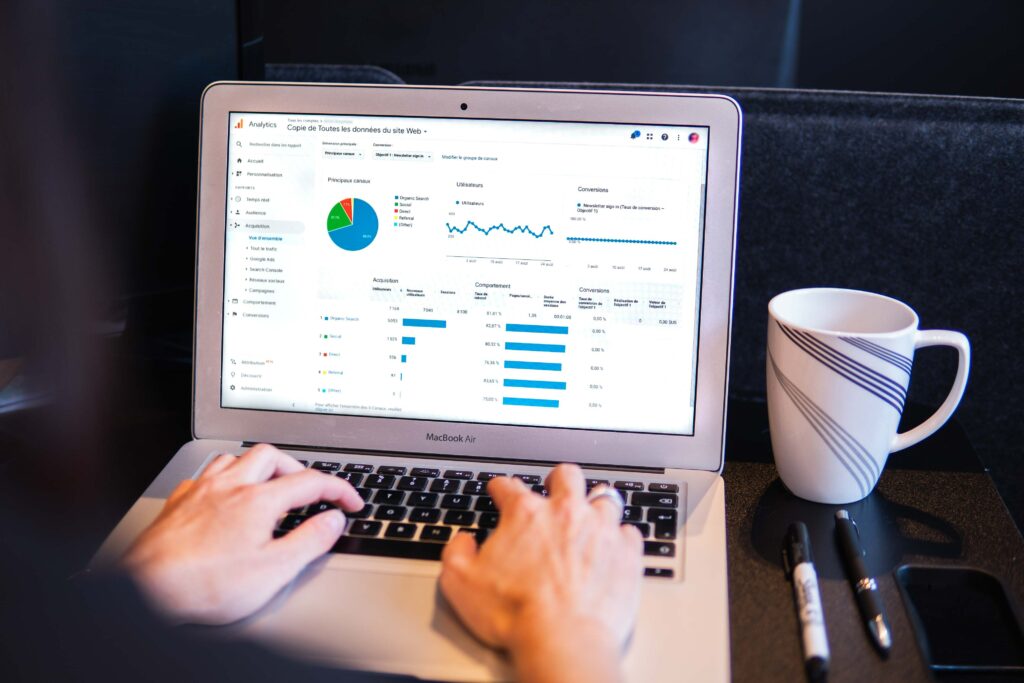Content optimization plays a crucial role in improving the search engine visibility and organic traffic of WordPress websites. By strategically optimizing the content, website owners can enhance their chances of ranking higher in search engine results pages (SERPs), attracting more relevant visitors, and ultimately achieving their online goals. In this blog post, we will explore the significance of content optimization in WordPress SEO, delve into how it can improve search engine visibility and organic traffic, and highlight the essential tools and best practices for effective content optimization.
Content optimization involves various techniques and practices aimed at making web content more appealing, accessible, and relevant to both search engines and users. By optimizing content, website owners can align their webpages with the search intent of their target audience, making it easier for search engines to understand and index their content accurately.
One of the primary benefits of content optimization is improved search engine visibility. When webpages are properly optimized, they have a higher chance of ranking prominently in search engine results. This increased visibility translates into higher organic traffic, as more users are likely to click on the optimized webpages.
Furthermore, content optimization enhances the user experience by delivering valuable and relevant content. By incorporating the right keywords and providing useful information, optimized content caters to the search intent of users, making it more likely for them to engage with the website, stay longer, and convert.
Throughout this blog post, we will cover a range of tools and best practices that are essential for successful content optimization in WordPress. These include tools for keyword research, on-page optimization, and performance analysis. We will also discuss best practices such as keyword placement, readability enhancement, and meta tag optimization. By implementing these tools and following the best practices, you can take significant strides in improving the visibility and performance of your WordPress website.
Now, let’s dive into the details of each aspect and explore the tools and best practices for content optimization in WordPress SEO.
Importance of Content Optimization for WordPress Websites
Content optimization is a critical factor in the success of WordPress websites. By effectively optimizing your content, you can reap several benefits that contribute to higher search engine rankings, improved user engagement, increased targeted traffic, and higher conversion rates. Let’s explore the importance of content optimization in more detail:
- Higher Search Engine Rankings: Content optimization plays a pivotal role in improving your website’s visibility in search engine results pages (SERPs). When you optimize your content with relevant keywords, proper formatting, and meta tags, search engines can better understand the purpose and relevance of your webpages. As a result, search engines are more likely to rank your website higher in relevant searches, increasing your chances of attracting organic traffic.
- Improved User Engagement: Optimized content is not only beneficial for search engines but also for your website visitors. By providing valuable, well-structured, and engaging content, you can enhance the user experience, encouraging visitors to spend more time on your website and explore further. When users find your content valuable and relevant, they are more likely to engage with it, share it with others, and return for more, ultimately leading to improved user engagement metrics.
- Increased Targeted Traffic: Content optimization helps you attract targeted traffic to your WordPress website. By identifying and incorporating relevant keywords in your content, you can align your webpages with the search intent of your target audience. As a result, when users search for those specific keywords or related queries, your optimized content has a higher chance of appearing in their search results. This targeted traffic is more likely to convert into leads or customers since they are actively searching for the information, products, or services you offer.
- Higher Conversion Rates: Optimized content can significantly impact your conversion rates. When your content is optimized with persuasive language, clear calls-to-action, and relevant information, it increases the chances of users taking the desired action, such as making a purchase, filling out a form, or subscribing to a newsletter. By aligning your content with the needs and desires of your target audience, you can effectively guide them through the conversion funnel and increase the likelihood of achieving your conversion goals.
- Establishing Credibility and Authority: Content optimization contributes to establishing credibility and authority in the online space. When your content is well-optimized, it demonstrates your expertise, knowledge, and commitment to providing valuable information to your audience. By consistently delivering high-quality optimized content, you build trust with your visitors and establish yourself as a credible source of information. This credibility and authority can lead to increased brand recognition, customer loyalty, and opportunities for collaboration or partnerships.
In summary, content optimization is vital for WordPress websites as it improves search engine rankings, boosts user engagement, attracts targeted traffic, increases conversion rates, and establishes credibility and authority. By investing time and effort in optimizing your content, you can enhance the overall performance and success of your WordPress website.
Tools for Content Optimization in WordPress
Content optimization in WordPress can be significantly aided by utilizing various tools that assist in different aspects of the optimization process. Here are some essential tools and their roles in content optimization:
1. Keyword Research:
Keyword research is a fundamental part of content optimization as it helps you identify the most relevant and valuable keywords to target in your content. Here’s how you can leverage tools and tips for effective keyword research:
- Importance of Keyword Research: Keyword research allows you to understand what terms and phrases your target audience is using when searching for content related to your website. By incorporating these keywords strategically, you can improve your chances of ranking higher in search results and attracting targeted traffic.
- Recommended Tools: Google Keyword Planner, SEMrush, and Ahrefs are popular tools for keyword research. Google Keyword Planner provides insights into keyword search volume and competition. SEMrush and Ahrefs offer more comprehensive keyword research capabilities, including competitor analysis and longtail keyword suggestions.
- Finding Relevant Keywords: To find relevant keywords, consider your target audience’s search intent. Think about the problems they are trying to solve or the information they seek. Look for keywords with high search volume and relatively low competition. Longtail keywords, which are more specific and have less competition, can be particularly valuable.
2. On-Page Optimization:
On-page optimization involves optimizing various elements within your webpages to enhance their visibility and relevance to search engines. Here are tools and tips for effective on-page optimization:
- Significance of On-Page Optimization: On-page optimization ensures that your content is well-structured, easily readable, and optimized for search engines. It includes optimizing meta tags, headings, content structure, and other on-page elements to improve search engine visibility and user experience.
- Recommended Tools: Yoast SEO and Rank Math are popular WordPress plugins that provide comprehensive on-page optimization features. These tools help optimize meta tags, headings, and content structure, offering suggestions for improving readability, keyword density, and meta descriptions.
- Utilizing the Tools: Install and activate the chosen on-page optimization plugin. Set up the necessary configurations, such as providing your target keywords and meta information. These plugins will guide you through optimizing individual pages/posts by analyzing content readability, keyword usage, and suggesting improvements. Pay attention to their recommendations for optimizing meta tags, headings, and content structure.
3. Performance Analysis:
Analyzing website performance is crucial for content optimization as it provides insights into user behavior and identifies areas for improvement. Here are tools and tips for effective performance analysis:
- Importance of Performance Analysis: Analyzing website performance helps you understand how users interact with your content, identify potential bottlenecks, and optimize your website for better user experience and engagement. It enables you to measure website speed, bounce rate, and user engagement metrics.
- Recommended Tools: Google Analytics and Google Search Console are powerful tools for performance analysis. Google Analytics provides detailed information on user behavior, traffic sources, and conversion metrics. Google Search Console offers data on website visibility, crawl errors, and search performance.
- Utilizing the Tools: Set up Google Analytics and Google Search Console for your WordPress website. Use Google Analytics to track user behavior, such as time on page, bounce rate, and conversions. Identify pages with high bounce rates or low engagement and optimize them. In Google Search Console, monitor website visibility, indexation status, and search performance. Identify keywords driving traffic and optimize content further for those keywords.
By leveraging these tools and following the recommended tips, you can effectively optimize your WordPress content for better search engine visibility, user experience, and overall performance.
Best Practices for Optimizing Content in WordPress
When it comes to content optimization in WordPress, certain best practices can significantly enhance the effectiveness of your optimization efforts. Here are some key practices to consider:
1. Keyword Placement:
Strategic keyword placement is crucial for optimizing your content effectively. Here’s why it matters and how you can incorporate keywords naturally:
- Significance of Keyword Placement: Placing keywords strategically throughout your content helps search engines understand the relevance and context of your webpage. Proper keyword placement improves the chances of ranking higher in search results for those targeted keywords.
- Tips for Incorporating Keywords Naturally: Incorporate keywords in your headings, subheadings, and throughout the content in a way that feels natural and adds value to the reader. Ensure that the keywords flow smoothly within the sentence structure. Avoid overusing keywords unnaturally, as it can lead to keyword stuffing and harm your rankings.
- Importance of Keyword Variations: Instead of using the same keyword repeatedly, incorporate variations of your target keyword to enhance relevance and avoid keyword stuffing. This not only helps in attracting a broader range of related search queries but also makes your content appear more natural and informative.
2. Readability Enhancement:
Readability plays a vital role in providing a positive user experience and improving SEO. Consider the following suggestions for enhancing readability in your content:
- Importance of Readability: Readability is crucial for engaging your audience and keeping them on your webpage. It also contributes to better comprehension, making your content more accessible and user-friendly. Search engines also consider readability as a ranking factor.
- Suggestions for Improving Readability: Use shorter sentences and break down complex ideas into digestible paragraphs. Incorporate bullet points, numbered lists, and subheadings to improve scannability. These elements make your content more visually appealing and easier to navigate, allowing readers to grasp the main points quickly.
- Role of Readability Plugins: Readability plugins like Grammarly or Hemingway Editor can be valuable tools for analyzing and improving the readability of your content. These plugins provide insights on sentence structure, grammar, and readability scores. They can help you identify areas where you can enhance readability and make necessary improvements.
3. Meta Tags:
Optimizing meta tags, including title tags and meta descriptions, is essential for content optimization. Here’s why they matter and how to optimize them effectively:
- Purpose and Impact of Meta Tags: Meta tags provide concise information about your webpage to search engines and users. The title tag appears as the clickable headline in search results, while the meta description provides a summary of the webpage. Optimized meta tags can significantly impact click-through rates and the perceived relevance of your content.
- Optimizing Title Tags and Meta Descriptions: Write compelling and concise title tags that accurately represent the content of the webpage. Include relevant keywords naturally within the title tag while keeping it within the recommended character limit of around 70. Similarly, craft persuasive meta descriptions that provide a concise summary of the webpage and encourage users to click. Keep meta descriptions within the recommended character limit of around 160.
- Tips for Writing Meta Tags: Ensure that your meta tags accurately reflect the content of the webpage, align with the search intent of your target audience, and stand out among other search results. Craft meta tags that convey the value and relevance of your content while enticing users to click through to your webpage.
By implementing these best practices, you can optimize your WordPress content effectively, enhance its visibility in search results, improve user experience, and drive higher click-through rates.
Conclusion
Throughout this blog post, we have explored the significance of content optimization in WordPress SEO and provided valuable insights into tools and best practices for effective optimization. Let’s recap the key points discussed:
- Content optimization plays a vital role in improving search engine visibility, organic traffic, and user engagement for WordPress websites.
- Strategic keyword placement helps search engines understand the relevance and context of your content. Incorporate keywords naturally in headings, subheadings, and throughout the content while using variations to enhance relevance and avoid keyword stuffing.
- Readability enhancement is essential for a positive user experience and SEO. Improve readability by using shorter sentences, bullet points, subheadings, and utilizing readability plugins like Grammarly or Hemingway Editor.
- Meta tags, including title tags and meta descriptions, significantly impact click-through rates and the perceived relevance of your content. Optimize them by writing compelling and concise tags that accurately represent the content while incorporating relevant keywords.
- Implementing tools like Google Keyword Planner, SEMrush, Ahrefs, Yoast SEO, Rank Math, Google Analytics, and Google Search Console can greatly assist in keyword research, on-page optimization, and performance analysis.
Content optimization is essential for WordPress websites to achieve higher search engine rankings, attract targeted traffic, and increase conversion rates. By following the suggested tools and best practices, you can enhance your WordPress SEO efforts and drive better results.
Remember, content optimization is an ongoing process. Continuously monitor your website’s performance, stay updated with the latest SEO trends, and adapt your optimization strategies accordingly. By investing time and effort in content optimization, you can maximize the visibility, usability, and success of your WordPress website.


